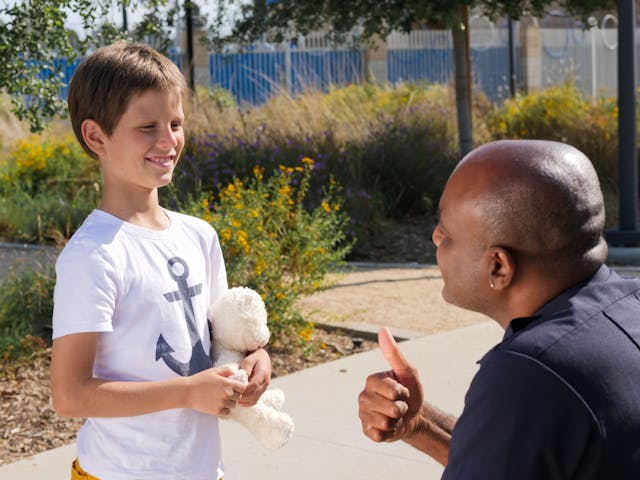Introduction
Child Protection in Emergencies (CPiE) is a critical field that addresses the urgent need to safeguard children from violence, abuse, exploitation, and neglect during and after crises. Whether caused by armed conflict, natural disasters, epidemics, or forced displacement, emergencies amplify the risks children face, often disrupting their families, education, health, and social safety nets. The consequences can be immediate and long-lasting.
This in-depth course equips professionals with the frameworks, skills, and tools required to implement effective child protection interventions in emergency settings. Designed for humanitarian workers, child welfare officers, social workers, educators, and development practitioners, this training supports evidence-based, child-centered approaches to crisis response. Participants will learn how to uphold children’s rights, provide life-saving support, and strengthen systems of care in fragile environments.

What Is Child Protection in Emergencies?
Child Protection in Emergencies refers to the prevention of and response to abuse, neglect, exploitation, and violence against children during humanitarian crises. It aims to ensure children’s safety and wellbeing, restore protective environments, and build the resilience of children, families, and communities.
CPiE is guided by the UN Convention on the Rights of the Child (CRC), the Minimum Standards for Child Protection in Humanitarian Action (CPMS), and the Core Humanitarian Standard (CHS). It is an integral part of life-saving humanitarian assistance and is essential to broader recovery and peacebuilding efforts.
Course Objectives
By the end of this course, participants will:
- Understand the principles, standards, and frameworks of child protection in emergencies.
- Identify and assess protection risks and vulnerabilities for children in crisis settings.
- Design and implement context-appropriate, gender- and age-sensitive CPiE interventions.
- Coordinate with humanitarian actors, governments, and communities to strengthen protection systems.
- Integrate child participation, psychosocial support, and safeguarding in emergency programming.
- Monitor, evaluate, and adapt CPiE programs for quality and accountability.
Key Interventions in CPiE
Family Tracing and Reunification (FTR)
- Rapid registration of unaccompanied or separated children
- Use of tracing networks and digital platforms
- Verification and safe reunification with caregivers
Psychosocial Support (PSS)
- Group activities for children and youth
- One-on-one support for children facing distress
- Staff training in Psychological First Aid (PFA)
- Referral to specialized mental health services
Child-Friendly Spaces (CFS)
- Establishing safe, supervised environments for play and learning
- Integration with education, nutrition, and PSS activities
- Community involvement in space management
Case Management
- Identifying at-risk children
- Developing and implementing individual care plans
- Coordinating referrals and follow-up
- Documentation using CPIMS+
Prevention of Child Recruitment and Use
- Awareness-raising and community engagement
- Monitoring and advocacy with armed actors
- Reintegration support for children formerly associated with armed forces or groups
Why Child Protection in Emergencies Matters
Disproportionate Impact on Children
Children represent over 40% of the global population affected by humanitarian crises. Emergencies heighten their exposure to:
- Family separation
- Sexual and gender-based violence (SGBV)
- Child trafficking and recruitment into armed forces or gangs
- Early marriage and child labor
- Physical and emotional abuse
- Psychological distress and trauma
CPiE reduces these risks and supports children to survive, recover, and thrive.
Life-Saving and Long-Term Impact
Timely child protection interventions can prevent irreversible harm. Early action saves lives, strengthens resilience, and contributes to lasting peace and development.
Legal and Ethical Responsibility
Under international humanitarian and human rights law, states and humanitarian actors have an obligation to protect children. CPiE ensures compliance, accountability, and dignity in crisis response.
Principles and Standards of CPiE
Participants will explore the foundational principles of child protection in emergencies:
- Best Interests of the Child: Every decision must prioritize what benefits the child most.
- Do No Harm: Interventions must avoid increasing risks to children or communities.
- Non-Discrimination: All children deserve protection, regardless of gender, ethnicity, disability, or background.
- Child Participation: Children have the right to be heard and involved in decisions affecting them.
Key global standards and tools include:
- CPMS – Minimum Standards for Child Protection in Humanitarian Action
- The Inter-Agency Child Protection Information Management System (CPIMS+)
- UN Guidelines on the Alternative Care of Children
- INSPIRE strategies for ending violence against children
You may also be interested in other courses in the Humanitarian and International Development
Child Protection Coordination and Advocacy
CPiE cannot work in isolation. This module focuses on:
- Humanitarian cluster coordination (Child Protection Sub-Cluster)
- Engaging with government child protection systems
- Coordination with education, health, WASH, and shelter sectors
- Advocacy for resources, access, and child rights
- Working with local partners and faith-based organizations

Monitoring, Evaluation, and Learning (MEAL) in CPiE
- Designing gender- and age-sensitive indicators
- Collecting child-friendly feedback
- Tracking service coverage and outcomes
- Ensuring ethical data collection and confidentiality
- Using data for adaptive programming
Assessing Risks and Needs
- Conduct rapid child protection assessments using participatory methods
- Identify specific vulnerabilities (e.g., unaccompanied and separated children, children with disabilities)
- Map protection services and referral pathways
- Use gender, age, and diversity analysis to tailor interventions
Case Studies and Best Practices
Participants will receive hands-on training using practical tools, including:

Case Study 1: Rohingya Response in Bangladesh
Child-friendly spaces, PSS services, and adolescent engagement reduced protection risks in crowded refugee camps.
Case Study 2: Earthquake Response in Nepal
Local actors were trained to run mobile child protection units that delivered case management and reunification services.
Who Should Attend
This course is ideal for:
- Humanitarian aid workers in emergency settings
- Child protection and safeguarding officers
- Social workers and counselors
- Health, education, and shelter professionals working with displaced populations
- NGO and INGO program managers
- Government staff in child welfare departments
- UN agency staff (UNICEF, UNHCR, IOM, etc.)
Methodology
The course uses interactive, participatory methods:
- Expert-led presentations on standards and strategies
- Role-playing and simulation of emergency scenarios
- Group work on risk assessment and action planning
- Peer review of real-life program designs
- Access to CPiE tools, templates, and frameworks
Participants will leave with a context-specific child protection response plan that they can implement in their current or future roles.
Outcome for the Course Sponsor
By sponsoring this course, your organization demonstrates its commitment to child rights and humanitarian accountability. You will strengthen your internal capacity to:
- Prevent and respond to child protection concerns in crises
- Comply with international standards and donor requirements
- Protect your staff, partners, and the children you serve
- Build partnerships with global CPiE networks and resources
This investment results in safer, stronger, and more resilient communities—where children are not just protected but empowered to reach their full potential.









